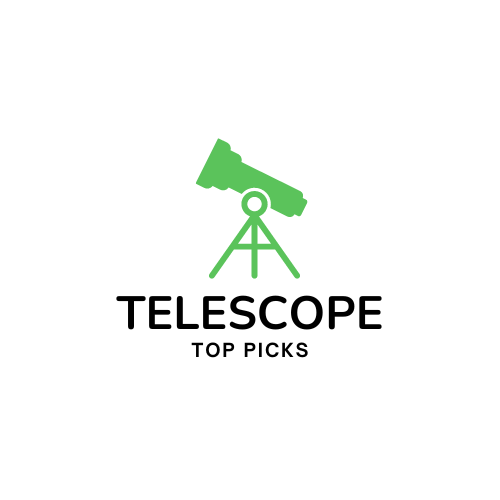
Are you a beginner astronomer eager to explore the celestial wonders with your telescope? Look no further! Discover the secrets to aligning your telescope for optimal stargazing experiences. From understanding the different alignment methods to overcoming common challenges, this article will provide you with all the guidance you need to embark on your astronomical adventures. So, grab your telescope and let’s set your sights on the stars!

Locating celestial objects
Understanding the celestial coordinate system
When it comes to locating celestial objects with your telescope, having an understanding of the celestial coordinate system is essential. This system uses two coordinates, namely Right Ascension (RA) and Declination (DEC), to pinpoint the exact location of celestial objects in the sky. Think of RA as longitude and DEC as latitude. By using these coordinates, you can accurately find and track specific stars, planets, galaxies, and other objects in the night sky.
Using star charts and software
To make the process of locating celestial objects easier, you can rely on star charts and software designed specifically for astronomy. Star charts, also known as sky maps, are graphical representations of the night sky. They show the positions of stars, constellations, and other celestial objects at a particular time and date. Some star charts are available as physical maps, while others can be accessed online or through smartphone apps.
Additionally, there are various software programs and mobile apps that utilize advanced algorithms to provide real-time information about the positions of celestial objects. These tools often include features like object databases, search functions, and even augmented reality overlays, making it even simpler to find and identify celestial objects with your telescope.
Identifying landmarks and constellations
Another helpful technique for locating celestial objects is to become familiar with prominent landmarks and constellations in the night sky. Identifying recognizable patterns of stars, such as Orion’s Belt or the Big Dipper, can serve as reference points for finding other objects. Once you locate a known landmark or constellation, you can use your star charts or software to navigate from there and find the specific celestial object you’re interested in observing.
By combining your understanding of the celestial coordinate system, utilizing star charts and software, and identifying familiar landmarks and constellations, you’ll have a solid foundation for accurately locating celestial objects with your telescope.
Choosing the alignment method
Alt-Azimuth alignment
Alt-Azimuth alignment is the simplest and most straightforward method for aligning your telescope. It involves aligning the telescope’s base horizontally (azimuth) and vertically (altitude) to match the position of the celestial object you wish to observe. This method is ideal for observing the Moon, planets, and other bright objects in the night sky.
Polar alignment
Polar alignment is more complex but essential for long-exposure astrophotography and precise tracking of celestial objects. This method aligns your telescope with the celestial pole, which coincides with the North Star (Polaris) in the Northern Hemisphere. By aligning with the North Star, your telescope will rotate on a single axis parallel to Earth’s rotation, allowing for accurate tracking of objects as they move across the sky.
Equatorial alignment
Equatorial alignment, also known as German Equatorial Mount (GEM) alignment, is another method that ensures precise tracking for astrophotography and extended observations. It aligns a specific axis of your telescope, known as the Right Ascension (RA) axis, with Earth’s axis of rotation. By aligning with Earth’s rotational axis, your telescope will follow the apparent motion of the stars as they move through the night sky.
Alt-Azimuth alignment
Understanding Alt-Azimuth mount
An Alt-Azimuth mount is a type of telescope mount that allows for movement in two directions: altitude (up and down) and azimuth (left and right). This type of mount is typically found on dobsonian telescopes and entry-level telescopes. Understanding how the Alt-Azimuth mount works is crucial for aligning your telescope properly.
Leveling the telescope
Before aligning the Alt-Azimuth mount, it’s important to ensure that your telescope is leveled. This can be done using a bubble level or by adjusting the tripod legs until the telescope is perfectly horizontal. A level telescope provides a stable base for accurate alignment.
Aligning the Azimuth
To align the Azimuth of your Alt-Azimuth mount, start by manually pointing your telescope towards a distant landmark or an object with a known azimuth, such as a tall building or a mountain peak. Use the mount’s azimuth adjustment controls to align the telescope’s pointing direction with the chosen landmark. This adjustment will help ensure that the telescope is pointing in the correct horizontal direction.
By understanding the Alt-Azimuth mount, leveling your telescope, and aligning the azimuth, you will be on your way to accurately aligning your telescope for enjoyable celestial observations.
Polar alignment
Understanding Polar axis and celestial pole
Polar alignment requires aligning your telescope’s mount with Earth’s rotational axis. To understand this alignment method, it’s essential to grasp the concept of the polar axis and the celestial pole. Earth’s rotational axis extends from the South Pole to the North Pole, with the North Pole being the location where the rotational axis intersects the celestial sphere. The celestial pole is the point in the night sky directly above the North Pole or South Pole, depending on your hemisphere.
Aligning with the North Star
In the Northern Hemisphere, aligning your telescope with the North Star, also known as Polaris, is key to achieving proper polar alignment. Polaris is located very close to the celestial pole, making it an excellent reference point for alignment. Start by roughly aligning your tripod or mount so that it faces north. Then, using your telescope’s altitude and azimuth controls, position the telescope so that it is focused on Polaris. Once the telescope is pointing at Polaris, fine-tune the alignment by adjusting the mount’s altitude and azimuth until Polaris remains centered in your telescope’s field of view as you rotate the mount.
Using a polar alignment scope or app
For precise polar alignment, you can also utilize a polar alignment scope or a smartphone app specifically designed for polar alignment. These tools provide additional accuracy by incorporating reticles or virtual overlays that assist in aligning with Polaris or other celestial objects near the celestial pole. By following the guidance provided by a polar alignment scope or app, you can achieve a high level of precision when polar aligning your telescope.
Understanding the polar axis and celestial pole, aligning with the North Star, and utilizing polar alignment tools will enable you to properly align your telescope for long exposures and accurate tracking of celestial objects.

Equatorial alignment
Understanding Equatorial mount
An Equatorial mount, also known as a German Equatorial Mount (GEM), is a type of telescope mount designed for easy tracking of celestial objects. It features two main axes: the Right Ascension (RA) axis and the Declination (DEC) axis. The RA axis runs parallel to Earth’s axis of rotation, while the DEC axis is perpendicular to it. Understanding how an Equatorial mount functions is essential for achieving precise equatorial alignment.
Aligning the Right Ascension (RA) axis
To align the Right Ascension (RA) axis of your Equatorial mount, begin by roughly aligning it with Polaris or the celestial pole, similar to the Polar alignment method. Once roughly aligned, use your mount’s RA adjustment controls to make fine adjustments, ensuring that the RA axis points precisely toward the celestial pole. This alignment allows your telescope to turn with the rotation of the Earth, compensating for the apparent motion of the stars in the sky.
Setting the Declination (DEC) axis
Once the RA axis is properly aligned, the next step is to set the Declination (DEC) axis. The DEC axis allows for vertical movement of your telescope. Before setting the DEC axis, it’s important to know the Declination coordinates of the celestial object you wish to observe. Consult your star charts or software to find the object’s Declination. Using your mount’s DEC controls, adjust the telescope’s angle to match the specific Declination of the object. Once aligned, your telescope will track the object as it moves across the sky while compensating for both RA and DEC movements.
By understanding the Equatorial mount, aligning the Right Ascension (RA) axis, and setting the Declination (DEC) axis, you’ll be well-equipped to achieve accurate tracking and prolonged observations of celestial objects.
Calibrating the finder scope
Aligning the finder scope with the main telescope
A finder scope is a small auxiliary telescope mounted parallel to the main telescope. Its purpose is to provide a wider field of view and assist in locating celestial objects before using the main telescope. To calibrate the finder scope, start by pointing your main telescope at a relatively distant object, such as a hilltop or a building. Look through the finder scope and use the targeting reticle or crosshairs to align the view with the same object. Adjust the alignment screws on the finder scope mount until the object remains centered in both the finder scope and the main telescope.
Adjusting the finder scope crosshairs
If your finder scope has adjustable crosshairs, you may need to fine-tune their alignment to ensure accurate pointing. To do this, choose a bright star or another celestial object visible in the night sky. Center the object in your main telescope’s field of view and then adjust the finder scope’s crosshairs to align with the object. By aligning the crosshairs with known celestial objects, you can rely on the finder scope to guide you towards desired targets.
Verifying the alignment using distant objects
To verify the alignment of your finder scope, choose a distant object, such as a tall tree or a building, and use the finder scope to locate it. Once the object is centered in the finder scope, check whether it is also centered in your main telescope’s field of view. If the alignment is accurate, the distant object should remain centered in both the finder scope and the main telescope. If adjustments are needed, repeat the previous steps until the alignment is satisfactory.
By calibrating your finder scope, adjusting the crosshairs, and verifying the alignment using distant objects, you can ensure that your telescope is accurately pointing at the desired celestial objects.

Fine-tuning the alignment
Using a high-power eyepiece
Once your telescope is roughly aligned, you can fine-tune the alignment by using a high-power eyepiece. High-power eyepieces provide a more detailed view of the celestial objects, allowing you to precisely center the alignment stars or objects chosen for the alignment process. By using a high-power eyepiece, you can ensure that the alignment is as accurate as possible.
Centering alignment stars in the eyepiece
To fine-tune the alignment, select alignment stars using your star charts or software and center them in your telescope’s eyepiece. Use the mount’s controls to make any necessary adjustments to keep the stars perfectly centered. By carefully aligning the stars, you increase the accuracy of the alignment process.
Adjusting the mount’s controls
Throughout the observing session, you may need to make minor adjustments to your mount’s controls to track a celestial object continuously. As Earth rotates, objects appear to move across the sky, requiring adjustments to keep them centered in your telescope’s field of view. Get comfortable with your mount’s controls and practice making these subtle adjustments to ensure a smooth tracking experience.
By utilizing a high-power eyepiece, centering alignment stars precisely in the eyepiece, and mastering the mount’s controls, you can fine-tune the alignment and enjoy uninterrupted observations of celestial objects.
Collimating the telescope
Understanding collimation
Collimation is the process of aligning the mirrors or lenses within the telescope to ensure optimal image quality. It is particularly important for reflector telescopes, which use mirrors to gather and focus light. Over time, the mirrors may become misaligned, resulting in blurry or distorted images. Collimating the telescope is a maintenance task that should be done periodically to keep the optical system aligned.
Aligning the primary mirror
To collimate a reflector telescope, you start by aligning the primary mirror. This is usually done by adjusting the mirror’s tilt or position using collimation screws or knobs. The goal is to make the mirror perfectly perpendicular to the optical axis of the telescope. By adjusting the collimation screws, you can achieve a sharp and clear image.
Aligning the secondary mirror
In addition to aligning the primary mirror, reflector telescopes require proper alignment of the secondary mirror. This can be achieved by adjusting the secondary mirror holder or using secondary mirror collimation screws. The secondary mirror should be aligned so that it reflects light directly back to the eyepiece or camera. By making small adjustments to the tilt and position of the secondary mirror, you can ensure that the light path remains unobstructed and the image quality is maintained.
By understanding the collimation process, aligning the primary and secondary mirrors, and regularly performing collimation, your telescope’s optical system will be optimized for the best possible viewing experience.
Avoiding common alignment issues
Dealing with light pollution
Light pollution can interfere with your ability to see celestial objects clearly and accurately align your telescope. It is caused by artificial light sources, such as streetlights and buildings, which create a brightening of the night sky. To minimize the impact of light pollution, try observing from darker locations, away from city lights. If observing from a light-polluted area is unavoidable, consider using light pollution filters specifically designed to enhance the visibility of celestial objects.
Checking for telescope and mount stability
Telescope and mount stability are crucial for accurate alignment and smooth tracking. Ensure that your telescope is securely attached to the mount and that all connections are tightened appropriately. Pay attention to any potential vibrations caused by wind or accidental bumps. Using a sturdy tripod or mount can significantly improve stability and reduce vibrations that could affect the alignment.
Accounting for atmospheric conditions
Atmospheric conditions, such as turbulence and air currents, can affect the clarity and stability of celestial objects, especially when observing at high magnifications. When aligning your telescope and throughout your observing session, take note of any fluctuations in the image caused by atmospheric conditions. Sometimes, waiting for better atmospheric stability or observing during periods of calm weather can enhance the clarity and detail of the objects you’re observing.
By taking steps to mitigate light pollution, ensuring telescope and mount stability, and considering atmospheric conditions, you can minimize alignment issues and optimize your viewing experience.
Troubleshooting alignment problems
Solving tracking errors
If you are experiencing tracking errors, where your telescope is not accurately following the object you’re observing, several factors could be at play. Start by checking your mount’s tracking rate settings. Ensure that it is set to the correct rate for your location and the celestial objects you’re observing. Additionally, check for any abnormalities in the mount’s motor drive mechanism, such as loose gears or belts, and address them accordingly. Fine-tuning the alignment as mentioned earlier can also help improve tracking accuracy.
Addressing motorized mount issues
Motorized mounts often come with settings and options to adjust tracking rates and other parameters. If you’re experiencing issues with the motorized mount, consult the user manual or contact the manufacturer for troubleshooting assistance. Sometimes, a simple recalibration or firmware update can resolve motorized mount issues.
Fixing alignment inconsistency
If you encounter inconsistencies in your telescope’s alignment, consider the stability of your setup and any potential user errors. Confirm that all alignment steps have been followed correctly and consistently. Be mindful of any bumps or movements that may have occurred during the alignment process. Additionally, ensure that you are using reliable and accurate alignment stars or objects as references. If alignment issues persist, try recalibrating the alignment from scratch and carefully follow each step.
By troubleshooting tracking errors, addressing motorized mount issues, and diligently double-checking alignment steps, you can overcome alignment problems and achieve accurate observations with your telescope.
In summary, aligning your telescope is a crucial step in successfully observing celestial objects. Understanding the celestial coordinate system, utilizing star charts and software, and identifying landmarks and constellations will assist in locating objects efficiently. Choosing the appropriate alignment method, whether it be Alt-Azimuth, Polar, or Equatorial, will depend on your observing goals and equipment. Calibrating the finder scope, fine-tuning the alignment, collimating the telescope, and taking measures to avoid common alignment issues will guarantee optimal performance. Should any alignment problems arise, troubleshooting techniques can help resolve them effectively. With practice and patience, aligning your telescope will become second nature, opening up a world of celestial wonders for you to explore.








